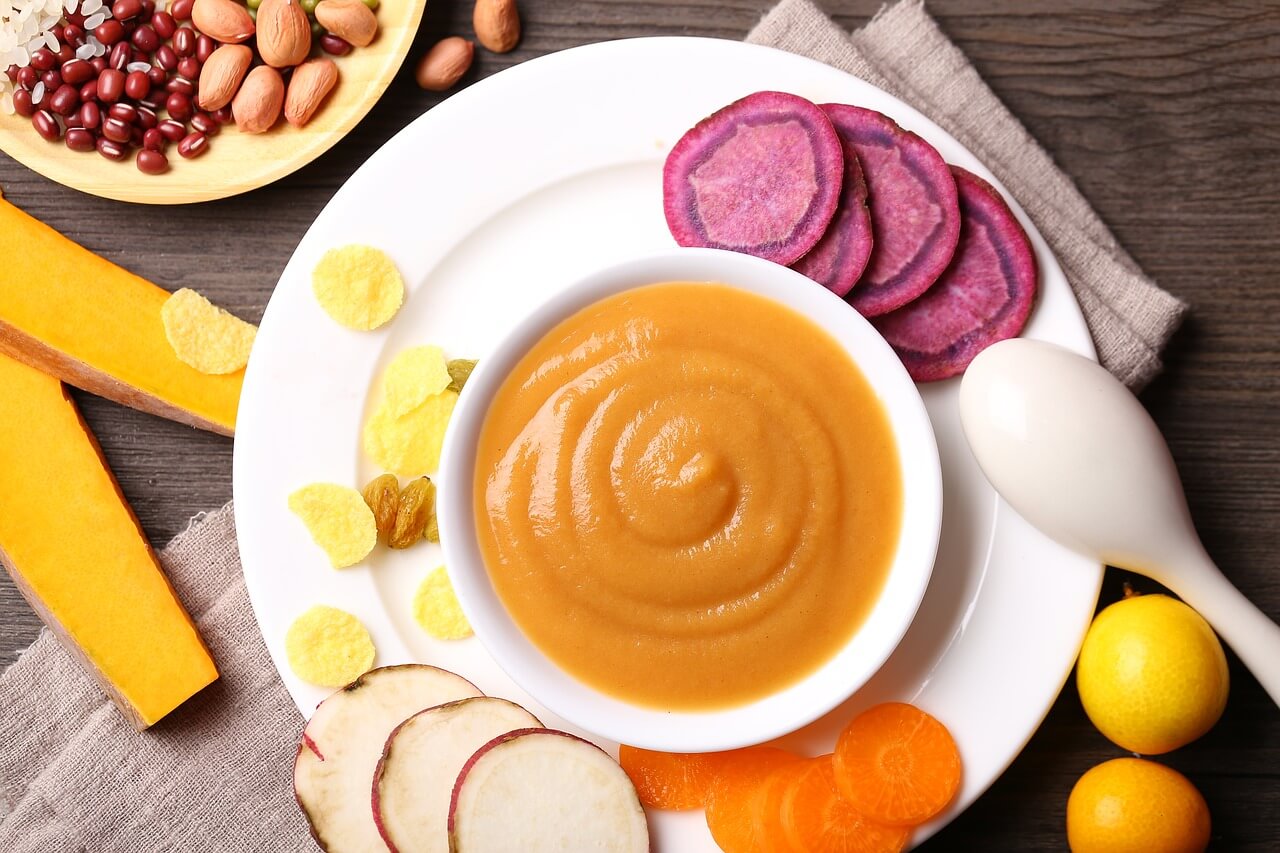Making Baby Food VS Buying it

How soon you want to introduce table food to your infant is up to you and if you think your little one is ready for it. For example, if your newborn is constipated, pediatricians have been known to recommend pears to help alleviate that problem. Children don’t start teething unit about six months old; however, if your baby is teething early, at three months old, they may be ready for samples of table food. Many variables come into play when deciding if your child is prepared for regular food or not. You know your baby better than anyone else.
Now that you’ve decided to start your little one on baby food, should you buy it, or make your own? Is there a difference between the two and if so, what are they?
Listed below are the differences between homemade baby food and store-bought baby food.
• Storing the food – This is obvious. Baby food from the store is already stored in an airtight container and doesn’t have to be refrigerated until it’s opened. However, homemade baby food needs to be either eaten within a couple of hours of being made, or frozen in an ice cube tray, freezer baggie, or freezer-safe container. And if it’s frozen, it needs to be thawed to room temperature. This is easy to remedy though because you can set the frozen food out ahead of time to thaw or if it’s in a container, set it in a bath of hot water to defrost it.
• Fillers and lack of nutrients – Many parents want to know exactly what they are feeding their children and begin to read labels on packaged baby food items. According to an article posted by WebMD.com (https://www.webmd.com/parenting/baby/features/making-baby-food#1), one mother advised,
“What sealed the deal for me was finding out that jarred food is cooked at extremely high temperatures to kill the bacteria for longer storage, at the same time taking out many of the food’s vitamins and nutrients and taste.”
Some companies use flour and other gluten ingredients, including corn flour, to thicken the ingredients. If infants cannot have corn until after their first birthday, why are they putting corn flour into the baby food? If you choose to buy prepared baby food, you may want to consider purchasing an organic brand. Watch for sales, and you can get pretty good deals on it. On the other hand, you know what your baby is eating when you make your baby food. There is no room for guessing what the ingredients are.
• Cost – Most baby foods sell between $.79 to $1.79 depending on what brand you buy. Always look for sales and stock a little bit. Making homemade baby food is less expensive. When you’re ready to feed your baby, all you have to do is take a banana that you already bought and mush it with a fork, and thin is with a little bit of water. Viola! Your infant has a nutritious snack at no extra cost to you. The same is true if you make mashed potatoes for dinner, simply set some aside to cool. If you have meat with your meal, use your blender or chopper to blend your meat and vegetables together. This way your baby is eating the same foods you are and reaping the health benefits of the entire meal.
Making food for your infant isn’t as involved and time-consuming as you might think, and you don’t have to invest in all kinds of kitchen equipment to make it either. With a little extra planning and strategizing, making homemade baby food is very rewarding. It also encourages your little one to experience a variety of textures and tastes. For more information on how to fit making baby food into your busy life, here’s an excellent post for you to read (https://health.clevelandclinic.org/from-the-jar-or-blender-which-baby-food-is-best/).
